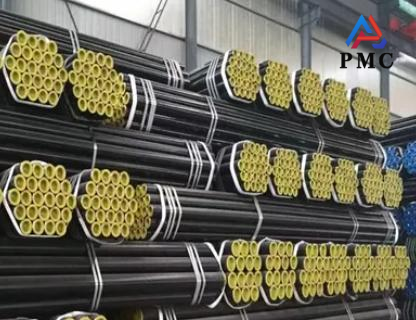
Hardness of Seamless Carbon Steel Pipe
The hardness of seamless carbon steel pipe is a very important mechanical property indicator. It directly affects the wear resistance, plastic deformation resistance and processing performance of the steel pipe. Its hardness is not a fixed value, but is affected by many factors and varies according to different application requirements. The main influencing factors and hardness range of seamless carbon steel pipe hardness are carefully summarized.
Factors affecting the hardness of seamless carbon steel pipes
1. Carbon Content
This is the most significant factor affecting the hardness of carbon steel.
Low Carbon Steel: Carbon content is typically less than 0.25%, resulting in lower hardness, good plasticity and toughness, and ease of machining and welding, such as 20# steel.
Medium Carbon Steel: Carbon content ranges from 0.25% to 0.60%. Strength and hardness are higher than low carbon steel, but plasticity and toughness are lower, such as 35# and 45# steel.
High Carbon Steel: Carbon content is greater than 0.60%, resulting in the highest hardness and good wear resistance, but poor plasticity and toughness, making it difficult to weld.
2. Heat Treatment Process
Heat treatment of steel pipes can significantly alter their microstructure and mechanical properties, thereby significantly adjusting their hardness.
Annealing: Reduces hardness, increases plasticity, and improves workability.
Normalizing: Refines grain size, improves strength and toughness, and maintains a moderate hardness.
Quenching: Significantly increases hardness but can make the steel brittle.
Tempering: Performed after quenching, it reduces brittleness and adjusts the balance between hardness and toughness.

3. Cold Working
Cold working of steel pipes, such as cold drawing or cold rolling, causes work hardening, thereby increasing the strength and hardness of the pipe. Cold-drawn/cold-rolled precision seamless steel pipes are generally slightly harder than hot-rolled pipes.
4. Alloying Elements
Although it's considered "carbon steel," even small amounts of elements like manganese and silicon, as well as trace alloying elements (such as vanadium, titanium, and niobium) added to certain grades, can affect the steel's hardness, strength, and toughness to a certain extent.
Hardness range of seamless carbon steel pipe
The hardness of seamless steel pipes is usually measured using Brinell hardness (HB), Rockwell hardness (HRB/HRC), or Vickers hardness (HV).
Brinell hardness (HB): The most commonly used, especially for softer steels.
Rockwell hardness (HR): This scale has multiple uses (e.g., HRB for soft steel, HRC for hard steel).
Vickers hardness (HV): Suitable for measuring a wider range of hardness, including very hard materials.
For seamless carbon steel pipes of different grades and states, the hardness range is roughly as follows:
Low-carbon steel (e.g., 20#, Q235B) seamless steel pipes
Typically have a low hardness of around HB 120-180.
The hardness may increase slightly after cold working.
Some standards specify a maximum hardness value (for example, some boiler pipes require HB ≤ 179).
Medium carbon steel (such as 35#, 45#) seamless steel pipe
The hardness is relatively high, with unheat-treated pipes likely reaching around HRC 170-220.
After quenching and tempering, the hardness can reach even higher levels, but the specific value depends on the tempering temperature and may reach HRC 20-40 or even higher.
Heat treated seamless carbon steel pipe
The hardness range of seamless carbon steel pipes that have undergone normalizing or quenching and tempering treatments varies depending on the specific material and treatment process. For example, some materials mention that the standard hardness range of carbon steel pipes after heat treatment is usually HB 200-241, which is usually for applications that require a certain strength.
Please note: The specific hardness requirements and ranges must refer to the national standards (GB) or international standards (such as ASTM and ASME) that the steel pipe complies with for the corresponding grades. These standards will have clear upper limits or ranges for the hardness of steel pipes in different states (such as hot-rolled, normalized, and quenched and tempered).
The importance of hardness
Wear resistance: The higher the hardness, the better the wear resistance of the steel pipe is generally, and it is suitable for conveying abrasive media or parts that need to resist wear.
Resistance to plastic deformation: Steel pipes with higher hardness have a stronger ability to resist local plastic deformation (such as indentation and dent).
Processing performance: Hardness affects subsequent processing (such as cutting, drilling, and welding). Excessive hardness will increase processing difficulty.
Toughness: Hardness and toughness are often in a trade-off relationship. Excessive hardness may mean lower toughness, and there is a risk of brittle fracture when subjected to impact loads.
Therefore, when selecting seamless carbon steel pipes, it is necessary to comprehensively consider the requirements for various properties such as hardness, strength, toughness, weldability, etc. according to the specific application conditions, and make the selection according to the corresponding standards.
Read more: Seamless Carbon Steel Pipe vs Seamless Alloy Steel Pipe


